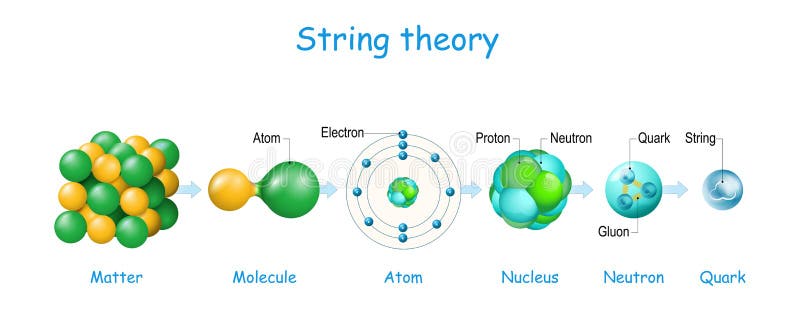In the annals of theoretical physics, few paradigms have captivated the imaginations of scientists as profoundly as string theory. This innovative framework, positing that fundamental particles are not point-like entities but rather one-dimensional strings vibrating at specific frequencies, promises a comprehensive unification of the four fundamental forces of nature. Yet, despite its ambitious scope and the tantalizing elegance of its mathematical underpinnings, string theory has also faced significant scrutiny and skepticism within the scientific community. The dichotomy of its potential and the challenges it presents encapsulates a testing time for strings, marked by the tension inherent in both its theoretical aspirations and empirical validation.
String theory emerged in the late 20th century as an elegant solution to longstanding dilemmas in particle physics and cosmology. It sought to address the inconsistencies and shortcomings of quantum field theories, particularly in scenarios involving gravity, where traditional approaches falter. At its core, string theory attempts to create a cohesive framework by merging classical and quantum mechanics, providing a candidate for a Theory of Everything (ToE). By extending the concept that matter and energy are manifestations of vibrational patterns within strings, proponents argue that string theory could resolve enigmatic questions regarding black holes, the Big Bang, and the very nature of spacetime itself.
Nevertheless, despite its theoretical allure, string theory is ensnared in a web of complexities that challenge its empirical substantiation. The mathematical structure of string theory suggests that additional spatial dimensions exist beyond the conventional three dimensions and time. This notion, while mathematically intriguing, presents formidable obstacles in terms of experimental verification. The energy scales at which string effects might become evident are far beyond the reach of contemporary particle accelerators, such as the Large Hadron Collider. As a result, physicists find themselves grappling with a dual conundrum: how can one test a theory that operates in a domain inaccessible to current technology?
Moreover, the vast landscape of solutions within string theory gives rise to a multitude of candidate theories, an overwhelming array of possibilities often referred to as the “string landscape.” Each of these solutions corresponds to a unique physical universe, potentially resulting in different fundamental constants and particles. This plethora of models engenders a considerable dilemma. If numerous string theory vacua exist, discerning which is pertinent to our universe becomes an intricate puzzle. This scenario leads to the anthropic principle, wherein only certain vacua may manifest properties conducive to the emergence of life and consciousness. While this notion piques curiosity, it also raises fundamental philosophical questions regarding the scientific validity of a theory predicated on the probability of existence.
Another critical facet of the current discourse surrounding string theory is its interaction with established experimental findings. The discovery of the Higgs boson in 2012 provided a monumental validation for the Standard Model of particle physics, a framework that string theory aspires to supplant. However, the Higgs boson’s characteristics do not directly corroborate or refute string theory; rather, they leave a realm of uncertainty surrounding the fundamental questions the theory seeks to address. As the dialogue between theoretical predictions and experimental results evolves, physicists are compelled to redefine their expectations regarding the nature of evidence in the realm of high-energy physics. Can a theory so mathematically sophisticated continue to evade empirical scrutiny, and more importantly, should it?
The philosophy of science plays a pivotal role in interpreting the implications of string theory’s struggles. The tension between theory and experiment invites a reevaluation of the paradigms underpinning scientific inquiry. Historically, theories are sculpted by both empirical observations and theoretical innovations, each continuously informing and refining the other. The current predicament of string theory calls for an acute awareness of the philosophical implications of scientific theories that exist outside the bounds of direct testing. As theoretical physicists grapple with reconciling abstract mathematics with physical reality, the question arises: How far can we venture into the realms of speculation before veering into the territory of unfalsifiability?
In this climate of uncertainty yet boundless potential, the next generation of physicists will play a crucial role in navigating the intricate pathways of string theory. The frontier of quantum gravity remains one of the most elusive domains in physics, and string theory holds the promise of unveiling fundamental truths about the cosmos. By fostering interdisciplinary collaborations and leveraging advances in computational power, researchers may uncover novel phenomena that could serve as potential signatures of string theory. Moreover, innovative experimental methods could arise, bridging the chasm between theory and experimentation, leading us to a deeper understanding of the fabric of reality.
In conclusion, the narrative surrounding string theory is one of profound complexity and myriad challenges as it traverses a testing time. The theoretical enterprise holds the promise of a revolutionary shift in our understanding of the universe, yet its empirical validation remains an ongoing struggle. As physicists forge ahead, guided by curiosity and the relentless pursuit of knowledge, the tension between the ideal and the real will continue to shape the evolution of this fascinating field. Ultimately, the future of string theory will hinge upon its ability to adapt and respond to the ever-evolving landscape of scientific inquiry, transcending mere speculation as it strives for a concrete foothold in the realm of tangible reality.












